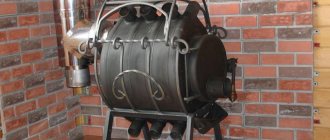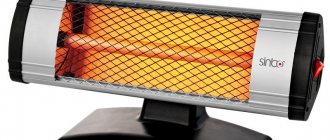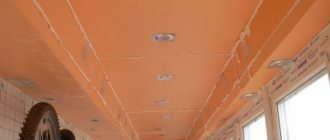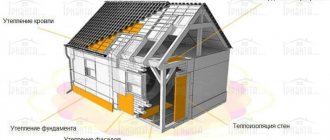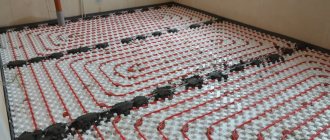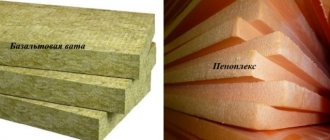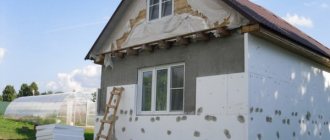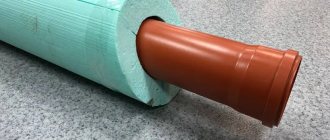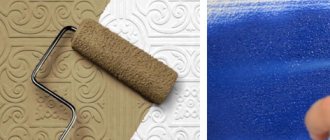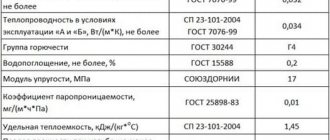The Internet has made it easier to access any information. People can not only learn and read almost anything, but they can also create news themselves. Often the professional and amateur opinions of the authors of different articles on the same topic are diametrically opposed.
The debate is especially intense when it comes to safety and health. The question of whether polystyrene foam is harmful or safe is one of these. Let's figure it out: expanded polystyrene - what is it?
What is polystyrene foam or expanded polystyrene?
First you need to understand what polystyrene foam is and how it behaves under various influences. And understand whether polystyrene foam is harmful to health?
Expanded polystyrene is a gas-filled material. They are made by steam heating polystyrene granules. These granules are first filled with gas. The gas used is different: in ordinary polystyrene foam, natural gas is used, in fire-resistant foam, carbon dioxide is used. When heated, the gas expands, and the granules increase many times in size (15 - 30 times the original).
If nothing restrains the expansion of granules, then the result is a crumbly material that is used in filling frameless furniture, packaging, and construction. To obtain solid forms of polystyrene foam, foaming is carried out in a closed form of the desired configuration. This is how flat sheets of insulation, embossed decorative products, boxes for packaging household appliances and much more are obtained.
The resulting material has a number of very advantageous qualities:
- high thermal insulation;
- high durability;
- low water absorption;
- low vapor absorption;
- biological stability;
- unattractive to rodents and parasites.
Polyfoam is an inexpensive, very light, practically non-moisture-absorbing material with low thermal conductivity. It is resistant to rot and biocontamination, durable, can take any shape and be elastic, but hard enough to hold its shape.
Thanks to this, expanded polystyrene has become widely used in many areas:
- In ammunition for safety (both military and civilian). In helmets, knee pads, and elbow pads, polystyrene foam is used as a shock-absorbing material and insulation.
- For the production of disposable tableware. Containers for hot food and cups for drinks are widely used.
- As packaging material. Expanded polystyrene protects fragile items well during transportation. It can be used both in bulk and in the form of pressed forms of the desired profile.
- For the manufacture of children's toys and child safety products.
- For frameless furniture (poufs, bean bag chairs).
- When making blanks for handicrafts and creativity.
- For the manufacture of decorative elements of the interior and garden decoration (fake stones, garden figures)
- In some countries (Japan, Finland, Norway, Canada, USA), polystyrene foam is used in road work to protect soil from freezing, reduce the vertical load on soils prone to subsidence, create artificial unevenness, etc. In Russia, polystyrene foam is not used for this purpose .
- For interior and exterior finishing. Various decorative elements of facades, ceiling tiles, imitation stucco molding and much more are made from expanded polystyrene.
- In the production of polystyrene foam, concrete and polystyrene foam blocks for the construction of walls in low-rise construction.
- For the manufacture of various heat-insulating and sound-insulating materials.
Polystyrene foam packaging
Advantages
- The ceiling slab is a very cheap material compared to stretch or suspended ceilings.
- The ability to hide defects on the ceiling, such as unevenness, the presence of old putty, etc.
- Easy to clean. To wash such a ceiling, it is enough to use absolutely any non-abrasive substance.
- Even a non-professional can install tiles. That is, if you decide to choose this type of coating, you can carry out the gluing yourself without turning to professionals.
- Fast installation speed. The repair, provided that you have chosen ceiling tiles, will take only one day (we are talking about a medium-sized room).
- It practically does not reduce the height of the ceiling (unlike drywall, which “subtracts” 5-7 centimeters from the height of the ceiling.
- Removing the tiles is very easy and takes minimal time.
How do foam products affect the environment?
Of course, such a proliferation of material and its daily participation in human life makes one wonder: is polystyrene foam harmful or safe?
Manufacturers declare that one of the most important performance qualities that polystyrene foam possesses is environmental friendliness. But their interest is quite understandable. That is why, when determining whether polystyrene foam actually harms the environment, it is better to turn to scientific research.
Expanded polystyrene under a microscope
The environmental friendliness of any material is determined by its own impact on the environment, the impact under certain conditions and when interacting with other substances.
Moreover, it is necessary to consider both the immediate impact and the long-term one. Here are the main influencing factors:
- Expanded polystyrene practically does not absorb water and does not interact with it at all. Therefore, its use, for example, in finishing and insulating facades, is not only effective, but also safe. It follows from this that ceiling tiles made of foam plastic, if not heated, pose no harm.
- Expanded polystyrene does not oxidize when exposed to air and does not decompose when exposed to ultraviolet radiation. These qualities allow polystyrene foam to be disposed of in a household waste dump, rather than at a specialized chemical site.
- Expanded polystyrene is not dissolved by any substances that it might come into contact with in a household waste dump. Solvents for it are acetone, original styrene, aromatic and chlorinated hydrocarbons. These substances are not (or at least should not be) found in household waste dumps.
- Expanded polystyrene is a very durable material. Cyclic stability tests with annual temperature changes in the range from -40 ° C to +40 ° C with exposure of the material to ultraviolet radiation and water showed that even after 80 cycles (which corresponds to 80 years), the structure of polystyrene foam remained unchanged.
- Temperature extremes are not typical for polystyrene foam use conditions, but have also been studied. When heated without an open flame source, even polystyrene foam not treated with fire-fighting substances begins to collapse only at 300 °C, and with an open flame - at 210 °C. The impact of low temperatures can not be taken into account at all, since destruction occurs only superficially, and even then at -310 °C.
Unfortunately, the bulk of used polystyrene foam is disposed of in household waste landfills. When buried, polystyrene foam is practically harmless to the environment, since it does not interact with water and air, but it does not decompose.
The situation is complicated by the fact that the collection and processing of polystyrene foam is not economically profitable today. During processing, expanded polystyrene can be used to produce polystyrene, however, the cost of this process is comparable to the production of polystyrene from primary raw materials, but requires a more complex organization of the process.
Another way to process expanded polystyrene is to grind it for use in the production of concrete - expanded polystyrene blocks, filler for heat-insulating mixtures and similar materials. This is a promising area of recycling that offers hope for reducing landfills.
Pile of old foam plastic
It is too early to say what harm polystyrene actually causes or will cause to the environment. The material is very durable. Even the first mass-produced foam plastics, buried in landfills long ago, have not yet approached the threshold of decomposition.
Extruded polystyrene foam harm or environmental friendliness
Advantages of thermal insulation material
The superiority of polystyrene foam is its cost, which will not be the last thing when deciding on the choice of material. Compared to many other heat insulators, it is the most advantageous when used from an economic point of view. Especially if you compare its undeniable advantages and compare them with its price. At the same time, polystyrene foam is a durable and elastic material, which greatly simplifies the installation process. Thus, the heat insulator is given any shape when cutting it without the help of special tools. To do this, it is enough to use a simple saw or an ordinary knife.
This material is not radioactive and non-toxic. It contains no toxic fibers. For these reasons, working with it does not pose a certain risk to human health. Expanded polystyrene can be handled during transportation, installation, operation and dismantling without the use of additional protective equipment. Touching this type of building material cannot cause irritation. The material is safe for the eyes and respiratory tract of humans or animals.
When working with the material, it is not necessary to use any protective equipment, that is, gloves, special safety glasses, special clothing, masks that provide oxygen. Thermal insulator is widely used in transport, civil, and industrial construction. Over the entire period of operation of the material, it has undergone various changes in its composition and structure. At the same time, the useful properties of the heat insulator were improved, and unnecessary ones were no longer available.
The influence of polystyrene foam on human health
Questions about whether polystyrene foam is harmful to health or not have worried consumers almost from the very beginning of its use. Each new finishing and building material based on foam plastic caused a renewal of these disputes.
Proponents of the use of expanded polystyrene cite the research of scientists - chemists, physicists and materials scientists - as a safety argument. Expanded polystyrene, without external influences on it, practically does not interact with the environment.
Its molecular structure is very stable. The experiments described above show that under normal human conditions, polystyrene foam does not emit any harmful substances. Actually, it does not release any substances.
Might be interesting
Thermal insulation
How to insulate a roof from the inside and not make mistakes?
Thermal insulation
Roofing and drainage: heating rules
Thermal insulation
Insulated Swedish stove: pros and cons
Thermal insulation
Penoizol: self-production
If you use polystyrene foam at temperatures from -40°C to +40°C, then you don’t have to worry about the harmful effects of polystyrene foam on health.
Opponents of the use of expanded polystyrene claim the possibility of styrene release. Even if not under ordinary, but under extreme conditions. Extreme conditions refer to exposure to high temperatures. Indeed, when burned, polystyrene foam, like many other substances, releases a large amount of toxic substances, among which styrene is considered especially toxic.
Effect of styrene on humans:
- dizziness;
- irritation of the mucous membranes of the eyes;
- high concentrations lead to lung damage and even fatal poisoning;
- the functioning of the kidneys, liver, and hematopoietic system is disrupted;
- oncology.
It is worth recalling that the separation of styrene from polystyrene foam under normal human operating conditions is impossible. Styrene is released only when polystyrene foam burns.
The flammability of the initially created polystyrene foam was quite high. At temperatures above 210 °C, the foam was able to independently support surface combustion and spread fire. That is why fire retardants (substances that inhibit ignition and flame spread) are now used for the production of construction and finishing polystyrene foam.
Thanks to this, it was possible to reduce flammability and increase the ignition temperature to 440 °C. In addition, most modern polystyrene foam products do not allow flames to spread and do not support spontaneous combustion.
The harmfulness of highly concentrated styrene to human health is great: it should be remembered that the release of styrene from polystyrene foam is unlikely from a chemical and physical point of view, especially if operating rules are followed and measures are taken to prevent fire.
It must be said that, like many other substances that are dangerous in large doses, but harmless in small doses, styrene is naturally found in many products that we use every day - coffee, tea, cinnamon, cheese, strawberries and so on.
Melting polystyrene foam
An exception to the permissible scope of use of expanded polystyrene is roof insulation. Yes, materials based on polystyrene foam are recommended by manufacturers as excellent roof insulation, but we must remember that a roof, especially a metal one, can get very hot under the sun. Despite the fact that the decomposition of polystyrene foam begins at a temperature significantly higher than that to which the roof can be heated naturally, the danger of styrene release will still exist. To insulate the roof, it is better to use mineral wool and similar materials.
The harm of expanded polystyrene to human health may also be associated not so much with the qualities of the material, but with its improper use in finishing. Expanded polystyrene is a very popular thermal insulator, but at the same time it does not allow steam and moisture to pass through. It happens that people, out of ignorance or out of economy, insulate the walls between the apartment and the street from the inside with sheets of expanded polystyrene.
This situation is serious because the moisture in the warm home air collides with the cold wall directly under the foam and condenses there. The wall on the concrete surface is constantly wet, which will inevitably lead to the development of fungus and black mold, the spores of which are a dangerous allergen. Black mold can trigger the development of asthma, chronic bronchitis and other diseases.
Walls can only be insulated with polystyrene foam outside the apartment to prevent condensation from forming.
Characteristics, properties and scope of application
To determine the harm of polystyrene foam as insulation, it is necessary to consider its properties, composition and manufacturing method. Special attention should be paid to the area of application, since it is the decisive factor in identifying the impact on humans.
Insulation
Foam plastic is almost irreplaceable as a material for protection against cold.
- Its porous structure can significantly reduce thermal conductivity.
- The polystyrene foam holds its shape perfectly, something that not one of the insulation materials in this price category can boast of.
- It is more than 90% air, so it does not burn and does not support this process.
- In its production, a minimum amount of styrene-containing substances is used, which is considered a decisive factor in determining environmental cleanliness.
- The maximum service life of foam plastic exceeds 50 years. This is evidenced by the installation instructions and the quality certificate included with most products made from this material.
Release of toxic substances
It is believed that polystyrene foam, when burned or subjected to strong heating, releases styrene, which is very harmful to the body and in its pure form can become a real poison. However, the harmfulness of basalt insulation is sometimes much higher, especially if violations were made during its manufacturing process, which leads to the decision to use a less dangerous material, although it emits unnecessary substances.
Thus, it becomes clear that it is quite safe to insulate a loggia or other premises using polystyrene foam. In the same cases where it will emit harmful substances, there are many other materials, in the form of vinyl wallpaper and plastic interior items, that can cause more harm. Rodents really like this material. Which may indicate a lack of toxicity.
Application area
When determining the degree of harmfulness of a given material, it is necessary to consider the places where it is used.
First of all, it is worth understanding that polystyrene foam is used indoors only when insulating plastic windows or entrance doors. In all other cases, cheaper materials are used. Therefore, its impact on humans is minimal. Separately, it is worth noting the insulation of walls in contact with the street. The fact is that it must be done only from the outside (see also article)
Otherwise, condensation will appear between the insulation and the wall, mold and mildew will form. When plasterboard partitions are erected, it does not matter at all whether the basalt insulation is harmful or whether styrene foam releases. In this case, both of these materials are placed in such conditions that their use is not only the most optimal solution, but also environmentally friendly. The only unsafe place to use this insulation is considered to be a metal roof
However, taking into account the fact that foam plastic is separated from the immediate area of incandescence by a layer of waterproofing, and from the living space by a vapor barrier film, then using it for these purposes is quite acceptable.
Research and practice
Many novice craftsmen, doing installation work with their own hands, turn to specialists or the Internet for advice. However, there is no clear opinion from experts or reliable research from specialists on the issue of the dangers of this material.
At the same time, practice has shown that the location of the insulation and external influences on it cannot completely eliminate the release of harmful substances. True, the probability of such cases is so small and requires certain conditions that it is not worth taking it seriously.
It is also necessary to remember that the price of other environmentally friendly insulation materials is very high, and their natural components also emit harmful substances when burned or overheated.
Rules for safe use
How to minimize harm from polystyrene foam, you need to take into account a number of rules:
- You cannot insulate rooms with high temperature changes;
- do not insulate the ceiling of a balcony or loggia, and those places where direct sunlight may fall;
- look at the certificate when purchasing, try to buy material in large retail chains;
- systematically ventilate the room;
- Humidifiers and ionizers cannot be used if there is foam insulation;
- The kitchen should have a good hood with air venting.
It must be remembered that styrene can be released when heated, so it is better to insulate areas that will not get very hot with foam boards.
Application of expanded polystyrene
To be more convincing, let's look at the areas of application of polystyrene foam:
1.Production of food packaging and industrial containers.
Impact resistance, long-term storage and universal geometry, resistance to the formation of microorganisms, and absence of odors allow the use of polystyrene foam for packaging various types of goods: household and food.
The material does not contain nutrients, therefore it is biologically neutral. Mold and mildew do not grow on its surface. This packaging is harmless to humans. Everything hot and cold that we eat is now stored in polystyrene foam packaging.
Would manufacturers around the world package goods and food in hazardous materials?
The safety of expanded polystyrene for human health is confirmed by its use for food packaging in accordance with GN 2.3.3.972-00.
2.Production of thermal insulation.
Expanded polystyrene PSB-S-25 (suspension polystyrene foam without press), containing fire retardants that provide fire protection, is used in the production of slabs for insulating building facades, as well as utility lines. Expanded polystyrene of this type does not support combustion in the absence of open contact with a flame. The material is self-extinguishing
3. Production of permanent formwork.
4. Materials for the construction of roads and bridges.
FAQ
Let's look at a number of questions about polystyrene foam and give answers to them.
Are foam ceiling tiles harmful?
To answer this question, you need to understand where the tiles will be installed. It cannot be installed in the kitchen, as sudden temperature changes are possible, and the surface is difficult to clean from a layer of dirt. You can install tiles in other rooms, but you just need to remember that the lighting should not heat up the foam tiles so that styrene does not release.
At what temperature do harmful substances release from polystyrene foam?
As already written above, the temperature should be above +40°C or below -40°C.
Why are polystyrene foam or polystyrene foam harmful?
The material itself is not harmful to human health, but if it is heated, styrene will be released, which is very dangerous.
What are the disadvantages of using a heat insulator?
Thermal insulator expanded polystyrene: benefit or harm
Table with characteristics of some thermal insulation materials.
Extruded polystyrene foam, like any other material, has its own pros and cons, which those who choose this insulation need to know about. It must be emphasized that not only the positive, but also the negative aspects of any building material are based solely on its properties.
Extruded polystyrene foam consists of granules that are glued together at very high temperatures. The granules contain air. In this case, the structure contains the main quality of the material. The air contained in the cells is maximally capable of retaining heat, so among all natural materials it will be one of the best.
The high level of performance of expanded polystyrene is combined with its high protective characteristics, which make it possible to protect the house from cold, the penetration of insects, bacteria, and moisture. This material is of no interest to insects because it is inedible.
The cellular structure gives the material almost everything, but it is worth highlighting the main thing - the material perfectly performs the main task, while at the same time solving the difficulties that arise associated with protection in conditions of high humidity or an obstacle to the destruction of wooden elements of houses from insect pests.
Forms of polystyrene foam.
There are also certain aspects to the use of the material that you need to be aware of, since it is not natural and prevents the surface of the structure from “breathing”. With normal ventilation it is very easy to organize the necessary air flow in the room, but the walls themselves will not “breathe”. Here, first of all, the properties of the heat insulator play an important role, which do not allow air to pass through, which eliminates its circulation.
Some believe that when burned, the material can emit dark smoke. Although, without a fire source, this heat insulator will not burn, producing smoke, which can only appear when polystyrene foam is burned for a long time. Typically, firefighters arrive much sooner than complete combustion of the material occurs. Most building materials can catch fire much faster than polystyrene foam.
Conclusions about the harm caused by polystyrene foam to the environment
We can conclude that one should not be afraid of extruded polystyrene foam, because it is a modern, high-quality and harmless material.
Expanded polystyrene and all its varieties are quite popular. Is this material as safe when used for thermal insulation of a home as the manufacturers present it?
It has been established that this material does not immediately have a harmful effect, but after a long period of time.
Normal temperature levels cause the material to disintegrate vigorously. In this case, a large volume of poisons and carcinogens is released, which are unsafe for human health. In particular, polystyrene foam is unsafe in case of fires, since the smoke that is released contains a large volume of dangerous compounds of organic substances.
Scientists have recognized polystyrene foam as an extremely unsafe material when it burns, which has led to conflicting opinions on the part of manufacturers who seek to sell the material at low prices. If a fire occurs, a person can be poisoned by toxic smoke along with volatile substances from the combustion of penoplex.
Damage caused by polystyrene foam
The Russian Research Center in the field of fire safety conducted multiple tests of polystyrene foam. As a result, experts came to the conclusion that, based on the level of toxicity, the insulation can be assigned a class of highly hazardous materials, therefore scientists recognize polystyrene foam as a highly toxic substance that, when burned, contributes to the formation of very toxic smoke and volatile substances. They are easily spread over long distances, that is, when penoplex fires in one apartment, toxic smoke spreads to neighboring apartments, which can cause suffocation in a person or animal.
To top it off, scientists note that the release of toxic smoke into the atmosphere as a result of burning polystyrene foam poisons the health of people and animals living near the site of the fire. For this reason, there is no doubt about the environmental threat associated with the use of this type of heat insulator. The damage to the heat insulator is also justified by the fact that the insulation can become unusable even earlier than the building structure itself.
An unsafe thermal insulator cannot be changed in a timely manner when used as insulation. At the same time, manufacturers of building materials constantly advertise this type of insulation, which is due to the fact that the properties of the material have not yet been sufficiently studied. A recently manufactured thermal insulator and the previous insulation, manufactured ten years ago, are two different materials, so over time, expanded polystyrene acquires a large number of new, far from safe parameters.
Ideas about polystyrene foam are incompatible with the concept of health, so people living in panel houses are often not healthy due to reduced immunity. At room temperature, expanded polystyrene is able to react with oxygen, which causes it to constantly oxidize, releasing toluene, styrene, acetophenone, benzene, methanal, ethylbenzene and other carcinogens. Based on the basic properties of thermal insulation materials, expanded polystyrene foam is represented on the construction market as one of the best thermal insulators. At the same time, the price to pay for using polystyrene foam is quite impressive.

